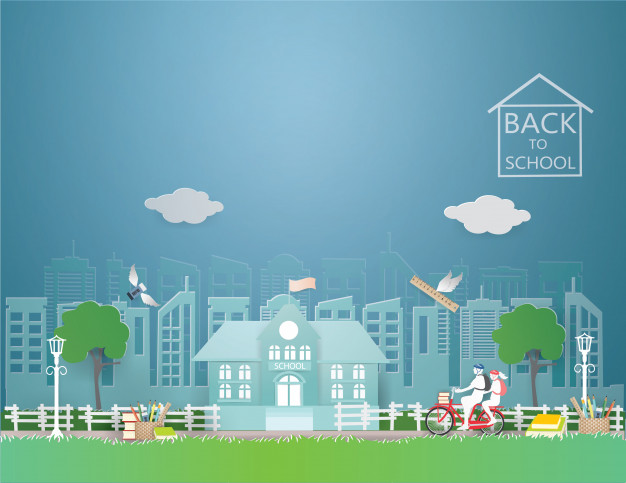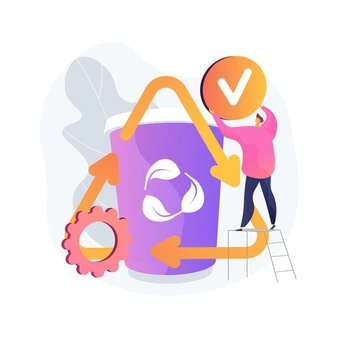Table of Content
Try Vizitor for Free!

Fri, Feb 26, 2021
Read in 6 minutes
There is always a significant focus to keep our surroundings clean and green. Similarly,the focus is always put on schools to create a clean, healthy, protective and green learning environment for students. Creating eco-friendly and green schools are not only important for preserving our planet but also essential for the well-being of our unfortunately endangered environment.
They’re also cost-friendly, especially when it comes to energy and water usage. It’s really a situation of pride.
Many schools are already making efforts to make their school environment greener.Those which have not started, there is a need to take their steps forward to keep their schools green and clean.
It is not just about thinking, it is about taking initiative to make efforts towards eco- friendly practices. There is a need to understand the importance of environment and ecology to start the movement. Making the school environment greener is one of the steps taken towards saving our ecological biodiversity.
Green Schools are delivering the society and environment with huge benefits such as cutting down costs, saving papers, saving energy and much more.
Each small effort made by students, parents and staff contribute not only to make our environment clean but also sustain our future generations.
Embrace Sustainability: Go Green, Stay Clean!
Going green is very useful for the environment. When you decide to go green then you’re already halfway there! There are some simple ways that will help for the eco-friendly schools movement.
Objectives of going green in schools
Going green in schools fulfill various objectives of green initiative programs. Some are listed below–
• Reduces environmental impacts
• Reduce carbon dioxide emissions
• Reducing water usage
• Improving learning experience
• Increase the overall health of students
• Green awareness among students
• Sustainability
• Achieving environmental and social values
• Efficient resource usage
More and more of us are realizing the importance of green schools for our planet and children. To achieve our goal of creating eco-friendly environments, we must educate and encourage our coming generations with go green activities for students. Let’s install green and clean habits in our schools for maintaining ecological balance in nature.
Let’s discuss some of the ways to go green in schools–
Here are simple steps to get started !
1. Use Eco-Friendly Lights
• Turn off lights in rooms that aren’t being used.
• Use the Eco-friendly lights like CFLs that use less energy than standard lights. These lights are in the affordable varieties. With these lights, energy and cost both can be reduced.
• Avoid use of lights during daytime.

2. Promote Walking & Public transportation among students and staff
• Encourage students and staff to prefer walking and cycling for short distances rather than using their personal vehicles.
• In case of long distances, public transportation must be encouraged to save fuel and the environment.
• These practices reduce the unnecessary usage of fuels like petrol that harms our environment.
3. Say ‘No’ to Plastic
• As we know, plastic is poison for the environment. Plastic is one of the most highly wasted products.
• We can reduce this in the school to avoid using plastic as much as possible and switch to using either regular dishes, or at least paper plates and utensils so that they can be recycled.
• Ban usage of plastic and polythene wrapper based items in canteens.
• Encourage students to bring their lunch in steel tiffins rather than using plastic ones.
4. Use Recycled Paper
• At the school, teachers should teach the students the importance of using more eco-friendly varieties, such as recycled paper for notepads. So they will reduce the wastage of the papers to save the trees as well.
• Make students write on both sides of papers and reuse their used notebooks for project works.
5. Get Creative and environment friendly
• To go green, then there is only one way that is reducing, reusing, and recycling. It’s all about being creative, and seeing where and how you can make small changes in your daily life.
• Organize environmental rallies and campaigns such as plantation drives to increase participation of students in environmental practices
6. Using eco-friendly and green materials
• Think deeply about various materials that can be replaced by eco-friendly materials.
• Replacing these with natural, eco-friendly solutions improve the well-being of students as well as staff.

7. Ensure sustainability in classrooms
• Establish sustainability within classrooms by making students follow green habits such as reducing water usage, turning off lights, avoid wasting paper etc.
• Impart environmental and social values among students by teaching them about environment and nature using different projects and teaching aids.
8. Enforce participation of students green activities
• Set up small gardens in school premises and involve students and staff in gardening.
• Gardening makes students realize the importance of plants in our life and also creates a peaceful and greener environment.
9. Go digital and paperless
• To be going green, schools have to take this step first at the front desk. School should replace its manual visitor registration system into a digital visitor management system.
• Visitor management system is a digital system that manages the students, staff and visitors digitally. This system reduces the use of papers, makes the school safe and digital.
• Eliminate the use of paper based attendance sheets. Instead, make use of digital attendance management softwares for this purpose.
• Avoid using thousands of copies of student registration and admission forms.Use electronic and online admission forms to save paper and nature.
10. Integrate green concepts in curriculum
• Include green lessons and green education in curriculum at early stages to educate students about environmental issues and concerns.
• Include practical sessions and laboratories on environment to make the learning more creative and interesting.
11. Go green, Go clean
• Go green in schools to make it clean and hygienic for children.
• Students spend much of their hours at schools. So, safety and health of their children is always a concern for parents.
• Creating a green and clean environment makes students learn in a hygienic environment.
• Going green is one of the most ideal ideas to create a safe and secure environment in schools.
Save Money With Saving The earth!
Eco-friendly schools save money. Going green in the school, we can save money. This money can be used elsewhere and invested in better educational tools for students. Recycling, reducing, reusing these all methods will help in saving the earth also!!

Wrap Up!!
Finally,it comes to the conclusion that the only way to preserve our earth and its beauty is by reducing our energy consumption and adopting green habits.Being green not only makes our schools green but also takes care of the world around us. The above discussed practices not only promote a sustainable, environmentally beneficial atmosphere but also promote a healthy environment for students. Implementing Visitor Management Software such as Vizitor helps schools in going green and more eco-friendly. Vizitor is the most reliable and easy to use software based on touchless technology which makes your workplaces more green and paperless. Switch to Vizitor for a green and clean school.






